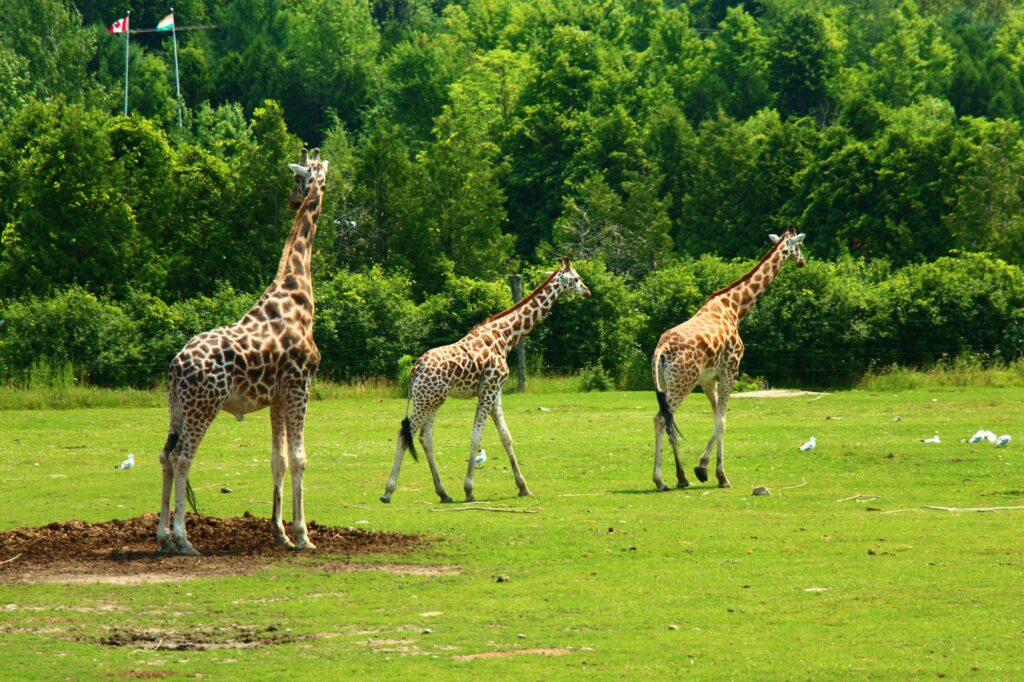
The other day we went to the Zoo with my boys (a five year old and a three year old). In the car, we were talking about which animals the kids would really like to see, and what animals would be there, etc. I was pumped because the kids love animals and showing them an elephant in a book and in real life doesn’t compare. In a book, there’s no movement, no comparison in size with the surroundings, no texture. My five year old son was especially excited, and he had a million questions for me about the zoo and the animals: “How do the giraffes drink water when they’re so tall? Do giraffes have a red tongue or a black one, like daddy says?” etc.
Then we got the tickets and a map of the Zoo. So exciting! Jakub, the five year old, couldn’t stop looking at the map and planning our trip around the Zoo: “We’ll go see the elephants first, and then the Rhinos and then this and then that. I really want to see the eagle and the owl and the kangaroos.” I was so happy. We came to the perfect spot. We also got this cool “passport” where the kids could stamp at a station near each animal to show they’ve been there, seen the particular animal. Also an awesome idea, I thought.
Then we started our journey. At first, my kids wanted to see each animal and to observe it in detail. They looked at the rhinoceros and the zebras for a good five minutes before we moved on. But then, soon after the first stamping station, the kids only wanted to look for the stamping stations, the animals were secondary. By the end of the first hour, my five year old was only looking to spot the animals and not actually examine them, how cool they moved, their texture, their details etc. My inquisitive child disappeared. He just ran to the cages looked for the animal inside and said something along the lines that we can proceed, because he already saw the animal. No observations, no questions anymore.
I was somewhat disappointed. There were so many activities around (the stamping of the passport, the food stands, the games and displays, and there was even a water park) that my child was so distracted, and the reason we went to the Zoo in the first place was displaced by all the other fun and games.
This got me thinking. Are kids getting bombarded by way too much information, too many activities? Is this making them go numb in the brain? Do they have enough time to process all this info, and to appreciate the details? I hypothesize that not only children need to be exposed to a lot of stimuli, but they cannot be overstimulated. That this bombardment of stimulus leads to a deterioration in their learning abilities, their well being.
Extracurricular Activities: I think about the endless activities into which we throw our kids. Piano on Mondays, Soccer on Tuesdays and Thursdays, Ice-skating on Fridays, Dance and Swimming on the Weekend. When do the kids get to just hang out with their friends? When can they practice that dance routine? When can they learn to play by themselves, explore the world, figure out what they are really passionate about? I have decided long ago that I would not do this to my children (and myself – all the driving, all the time spent out of the house). So my kids do swimming lessons and that’s it. Maybe sometime in the future, I’ll see if they’re interested in piano, but other than that, they have time to explore and do non structured activities, with me or with their friends.
Toys: My kids have way too many toys! All the birthdays, Christmases, trips, all the grandparents, family, and friends – the toys add up. Sometimes these toys drive me crazy and I just want to throw them all away. My boys hardly know what to do with all these toys. They should be able to be constantly occupied having so much stimulation, however this is hardly the case. So many toys, and yet, they still take my keys or a blanket and play with those instead. It’s too overwhelming. They just see the huge amount of toys, and get distracted. If they just had one stuffy toy, they might love it hard, play with it hard, make it their friend. But if they have 100 stuffy toys (and I think we do), then there is no toy that is loved over another. All toys are just “junk”. If they lose one stuffy, they still have 99 around the house – not a big deal. It’s too much! I bet that children that do not have as many toys have a better relationship with the toys they do own. They appreciate their toys a lot more, and possibly develop a better imagination.
Theme Parks:Theme parks, such as Zoos, Disney World, Amusement Parks, are an overload of info / activity. As I stated earlier, Zoos have too much going on. Even if they just had animals and no other activities, I think this would be too much. Seeing an animal in the wild is a huge experience! When driving through the Rocky Mountains sometimes you can be lucky to see a bear, or some mountain goats or a moose. But during those experiences, you get out of the car (except when the bear is too close, then you stay in the car and close all the windows), take pictures, observe carefully, and take it all in. You feel privileged that you got to see such a magnificent beast. Seeing a bear in the Zoo is unexciting. There’s no thrill. Everybody sees the bear. It’s not a treat, threat, or experience, just another animal behind cages. You just go by and tick off the bear on your map! Disney World is the same. So many rides, so many things to do, that at the end of it all, you cannot even remember all of it. The details are lost, and the child only wants more, more, more. Nothing simple can then satisfy the child; the child can no longer see the pleasure in simple things.
I remember going to a museum one time when I was a child. My mom knew the curator of the museum, and he took us around. I asked him why after each item on the wall there was a blank spot. He explained that he made it purposefully this way, that after each display, the viewer could reflect on the item before introducing something new. Imagine going to a gallery and seeing each wall full of paintings without empty space around them. You would see all the paintings, but you could not appreciate any of them. I think this is what we are doing to our kids with this overstimulation. There needs to be “white space” in our daily lives as well, so that we can appreciate “the painting”.

